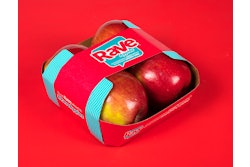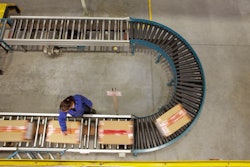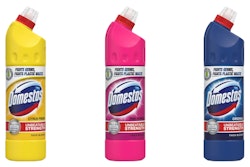The 2021 PMMI Business Intelligence Committee white paper Beverage Trends Driving Change explores how the dominant trends in the beverage market are shaping the future of beverage packaging and machine purchases. Hear Donna Ritson, president of DDR Communications, take a detailed look at how consumer, market, and production trends are influencing both the packaging choices at manufacturers and the machine features coming from industry OEMs.
To subscribe, rate, review and find more unPACKED podcast episodes, visit pmmi.org/podcast or find us on Apple podcasts, Spotify or iHeart Radio.
 | Read the full transcript below |
Sean Riley:
Welcome back to the podcast. One of our most frequent guests, Donna Ritson. Welcome, Donna.
Donna Ritson:
Thanks, Sean. It's always great to join you and your listeners.
Sean Riley:
The pleasure is all ours. Now, today we're talking beverage, and beverage is huge across the board, but particularly in our industry. So I guess before we kind of dive into what's shaping the beverage industry, could you sort of give us an overview of the market right now in general, how big it is, where growth is predicted, that kind of stuff?
Donna Ritson:
Absolutely. That's a good place to start Sean. Let me give you some basics first about this report particularly because beverage is such a large market. This white paper really covers the segments of soft drinks, juices, water, sports energy drinks, functional and nutritional drinks, coffee and tea. So I just wanted to clarify, this is not alcoholic beverages or dairy. Those are completely separate studies that could be undertaken. So this paper on the beverage industry covering those specific beverages really breaks down the market around the world and we forecast future growth in that as well. So I'll give you a couple highlights here.
Sean Riley:
Sounds good.
Donna Ritson:
From the volume standpoint, the global beverage market has moved over well over a billion units in 2020, which is a significant movement of beverages in the global market. The Asia Pacific really accounts for the largest share of that market. Two out of every beverage sold is consumed in the Asia Pacific region, followed by the US, which is no surprise. We consume nearly a fourth of those beverages and Western Europe is a little bit smaller of a market consuming only about 16% of the unit sold. And from a revenue standpoint, the global beverage industry is really predicted to see some steady growth through 2025 at about 6% CAGAR, little bit less in the US, a little over 5%. So really, overall the beverage industry is really healthily growing around the world.
Sean Riley:
And I think we kind of all have seen that and we're all partaking in beverages, but I think being in this industry, we know that beverage is something that has been on the rise. So with this being such a global thing, how is that affecting packaging producers and how are packages being affected? Is there different styles of packages that are being used? What is happening on the packaging end of this?
Donna Ritson:
A really good area to dive into here. From a global perspective we look at this both globally and in the US and there are some similarities that we've seen, but I'll point out a couple of the differences that are worth noting. Rigid packaging specifically is still the preferred packaging. Keep in mind for this particular group of beverage products that we're talking about the US market is similar to the global market with just over two out of five beverages packaged in plastic. So both globally and in the US that's pretty similar. But then when we look at cans, about one in four beverages now is coming in cans and about one in five in glass and the differences that we really see here between the global market and the US market is that for the global market, they are using a little bit more in glass, in some instances, and here in the US we're seeing some tremendous growth in cans, and that's really coming in all size cans. As we've seen Sean, there's all different kinds of size cans now that we're seen on our consumer shelves.
Donna Ritson:
So, the differences between these two markets really do lie in that metal and glass ratio. As I mentioned, the US has a much stronger preference for cans. Our metal packaging makes up about two out of five beverages we're starting to see now is coming in cans compared to only maybe one in four globally. So while these two markets deviate when it comes to glass packaging, glass really still makes up a small percentage. Maybe only one out of 10 packages in the US are coming in glass while the global market share really is seeing twice that much in glass, maybe two out of every five global beverages are packaged in glass. So there's still some geographical differences in the packaging.
Sean Riley:
Interesting. Is there, do you see any reason why the US is so loyal to aluminum or metal cans?
Donna Ritson:
Well, a lot of this has to do with, based on the statistics that we found, rigid plastic is still the most popular as we know, but cans, what is our affinity for cans here in the US? It's hard to say. The kind of those tall, sexy cans came out and the small little short cans came out and it's really taken over in the popularity here in the US, particularly for some specialty drinks and some of the functional drinks that are coming in the market.
Sean Riley:
Interesting.
Donna Ritson:
But the different sizes and the level of growth, a key trend that is really driving this is sustainability.
Sean Riley:
That's what I was kind of thinking, and I didn't want to feed you that, but I was thinking along those lines, are we, is that just a material that we as Americans find or we in the US find to be more recyclable, more sustainable. So that kind of tied into, I guess, what I was sort of thinking along those lines and as you said, there is other rigid... You've spoken about how, excuse me, rigid packaging is still king of the market, but there are other formats emerging, is that something that's fair to say?
Donna Ritson:
Absolutely. Sustainability is everywhere. We talk about it in every market that we study. Particularly in the beverage industry, sustainability is one of the most important trends that's driving packaging and processing machinery purchases and from a packaging perspective the consumer is really driving this sustainability and it's really kind of a twofold. On one hand, consumers were less interested in rigid packaging that is viewed as less sustainable. So your cue on that, that we as consumers believe or perceive that cans are more sustainable, more returnable, certainly they're more recycled. In turn this is really driving the metal industry and cans and some brand imaging is coming in glass, but it's important to note that four out of the five beverage manufacturers that we interviewed stated that they're increasing their use of recycled plastics in their beverages. So we can really say that consumer awareness is really driving the sustainability and looking at containers that we will more often recycle and maybe more readily perceive as sustainable.
Sean Riley:
Interesting because so that it kind of speaks to what we were just talking about, where especially here in America, we're prone to using metal and glass because of that perception that we have that it's more sustainable. It's easier to recycle things like that. And now we see that the beverage makers are seeing that, the consumers obviously drive these trends and that they need to do things to adapt with their plastic packaging and they're doing that by incorporating recycled plastic using less virgin plastics. And that's good to see, that obviously that's something that they're seeing on their end to kind of meet that demand. Now, I guess with all that being said, this has to have some sort of impact on machinery in the beverage industry. So I guess how is this affecting our OEMs in packaging and processing?
Donna Ritson:
Well, it's definitely having an impact. Basically, as sustainability drives the packaging material changes that's causing production changes as well. For example, switching from an aluminum... I'm sorry, switching from plastic to an aluminum can, it's a requirement in the packaging material itself, but also the machines doing the packaging need to be reevaluated. So typically that would mean for a brand manufacturer of beverage products really looking at making a change in their equipment and when we interviewed the beverage manufacturers and leaders of the industry we found that two out of three beverage manufacturers have long term plans to add additional packaging equipment and processing equipment so that they can up and increase their production and frequently, if they're spending more, we really did look a little deeper and ask is there actually some capital budgets that are behind these purchases in the coming year and over 50% of the brand manufacturers that we talked to said, yes, they are, these are real purchase plans backed by growing capital and when you look at there's over 3000 beverage manufacturers across the US, this market is pretty expansive.
Sean Riley:
That's amazing. So, yeah, so there is, it's not just people saying that they're going to spend money, there's actual stats to kind of back that up, which is good for our OEMs out there. So if beverage manufacturers are looking to make these purchases and have the resources to do so, this is obviously great news. I guess, what other key pieces of information from the white paper should beverage OEMs be aware of?
Donna Ritson:
Well, there's a couple things here I'd like to point out, Sean. It's important to understand that the trends that are driving these changes and obviously ultimately driving growth, the consumer is really behind this. We as consumers, which we are all consumers here that are listening in on this podcast, we're looking for sustainable, we're looking for health conscious beverages, we want beverages to be convenient. So this is really pushing a steady expansion of skews in the beverage industry and it was an interesting statistic as well that four out of five of the beverage manufacturers, again, that we interviewed, they say they're introducing new beverage formulations on a regular basis, reducing sugar, adding more functional ingredients, adding more healthy ingredients into that.
Donna Ritson:
And to keep up with that expansion, obviously the beverage manufacturers need to expand their capabilities and in one way is through purchasing and another way is also through contract packaging. But this skew expansion also means that manufacturers are looking for machines that are more nimble and more versatile. This is certainly not something that is new in terms of what we're hearing of the nimbleness and versatility of machines. So beverage manufacturers are really striving to look for machines and are asking the OEMs to have flexible machinery that can accommodate their growing needs in different shapes and different sizes and different materials that we see coming out in the beverage industry.
Donna Ritson:
So in addition to flexible machines, OEMs, if they ask themselves a couple questions here and not just OEMs, but suppliers in general, to keep up with the production and to really address the needs of this industry, are they doing enough to proactively engage the beverage manufacturers is a question to ask themselves and are they meeting the needs of the desires of these beverage manufacturers to be flexible and nimble and be able to change packaging formats? And are they delivering the flexibility in their manufacturing that is actually needed and being requested by the beverage manufacturers?
Donna Ritson:
So before we close Sean, I'd like to just point out a couple more things that the white paper covers so that listeners can download this white paper and have a little bit broader expectation. The white paper also covers the challenges. Beverage manufacturers are starting to see direct to consumer shipping so that really affects the end of the line and the impact on the supply chain, now we know that's something that's been plaguing us since the beginning of COVID and continues to plague us with material shortages, particularly aluminum is experiencing a continued ongoing shortage. And the white paper also covers a lineup of specialty beverages that continue to hit our consumer shelf, that we as consumers are buying and consuming.
Sean Riley:
Very interesting. So there's obviously much more to learn about what these major trends are right now that are impacting the beverage industry and how they're affecting the packaging and machine purchases at beverage manufacturers. So for our listeners, I would encourage you to head over to pmmi.org/research and to download this white paper. It's fantastic. Beverage trends driving change, and that's again at pmmi.org/research. With that, Donna, thank you again for coming on here and joining me to talk about one of your research papers and this time, pretty much covering beverage inside and out.
Donna Ritson:
Thanks so much, Sean. It's always a pleasure.


























